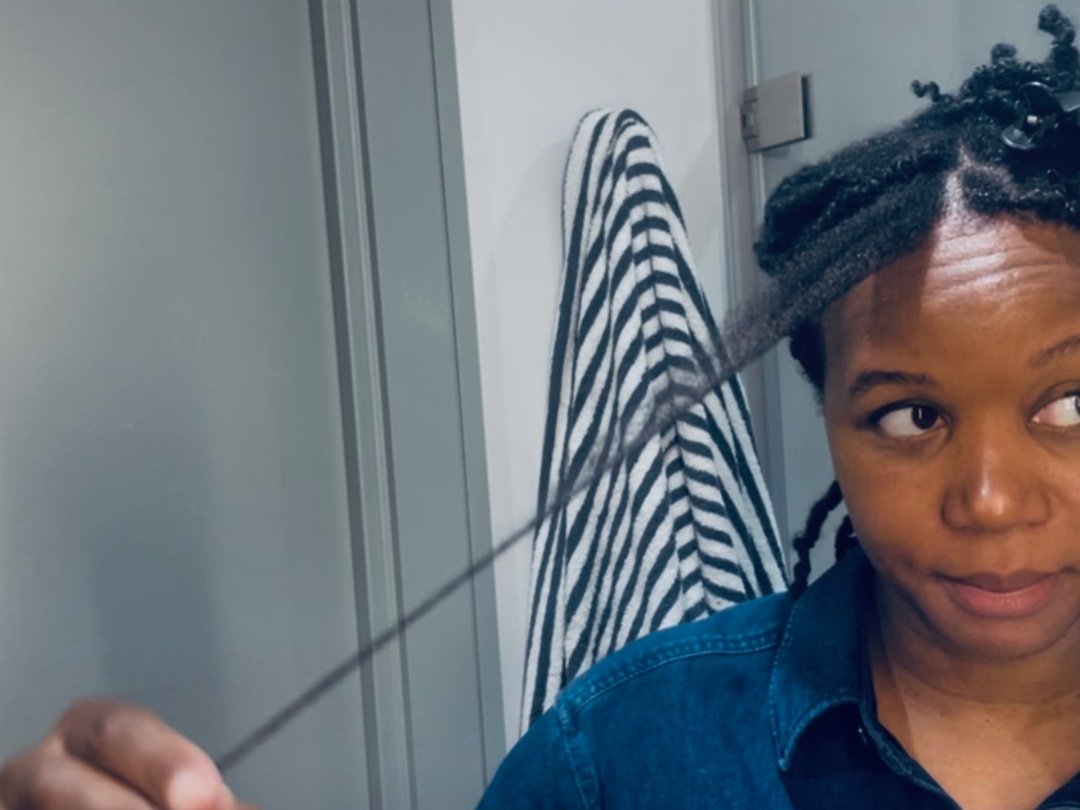Growing Natural Hair: Myths, Mistakes & What Actually Works
If you’ve ever heard someone say “coily hair doesn’t grow”, let’s shut that down right now. Textured hair grows just like any other hair type - but it requires a unique kind of care to retain that growth and keep it flourishing. Whether your hair is 4A, 4B, or 4C, high porosity or low porosity, growing healthy hair is absolutely possible. Let’s break down what might be holding you back, and what you can do to grow and retain that length like it’s nobody’s business.
Common Mistakes You’re Probably Making
Neglecting Moisture
Coily hair is naturally dry (learn why). Skipping deep conditioning, not using the LOC/LCO method, or going too long without moisturizing can lead to extreme dryness and breakage. And once your hair starts breaking, length retention becomes nearly impossible.
Over-Manipulation
Frequent combing, tight styles, or constantly switching up hairstyles can stress your strands. Coily hair is fragile - treat it like fine silk. You should avoid changing styles every other day and treat you hair with care in between styles - when taking down styles, detangling, washing, combing, etc.Skipping Trims
Some naturals avoid trims in the name of length, but this often backfires. Split ends will travel up the strand if not trimmed regularly, leading to more breakage.Using the Wrong Products for Your Porosity
If you don’t know your hair’s porosity (how well your hair absorbs and retains moisture), your products might be doing more harm than good. More on that in a minute.Heat Overload
Flat irons, blow dryers, and hot combs might be tempting, but frequent heat use without protection can permanently damage your curl pattern.
Debunking the Myth: Coily Hair Doesn’t Grow
Let’s say this together: “our hair grows”. On average, human hair grows about 1.27 cm (½ inch) per month, regardless of texture. The myth that 4C or kinky hair doesn’t grow comes from the fact that this hair type tends to shrink a lot and is prone to breakage, so it can look like it’s not growing. But trust me - it is.
On average, the hair growth ½ inch (or 1.27 cm) every month
Here, the key word is retention. Coily hair forms tight coils and bends that make it more delicate. The tighter the curl, the more potential breaking points it’ll have. But with the right care your hair can grow to stunning lengths.
The Importance of a Hair Care Routine
Being consistent with your hair care routine will take you further than you can imagine
Think of your hair like a plant - it needs consistent care to thrive. Your routine doesn’t have to be complicated, but it does need to be consistent. Here’s a basic framework, with porosity-specific tweaks:
Low Porosity Hair (Struggles to absorb moisture)
Use heat (steam or warm towel) during deep conditioning to open up the cuticles.
Avoid heavy oils and butters—they tend to sit on top.
Clarify occasionally to prevent buildup (for example, every other week or at least once a month).
High Porosity Hair (Absorbs moisture quickly but loses it fast)
Seal in moisture with heavier products like shea butter or castor oil.
Protein treatments can help strengthen the hair and reduce porosity. But don’t make the mistake of relying solely on protein treatments. Pay attention to your hair and throw in a moisturizing treatment ever now and then.
Avoid over-washing - too much water exposure can lead to breakage.
Normal/Medium Porosity Hair
Balance moisture and protein treatments.
Most products work well, so focus on what feels right for your hair.
What You Should be Doing (Customize for Your Porosity)
Having a hair care routine is a must
Wash Day (1x/week): Cleanse + Deep Condition
Moisturize (2–3x/week): LOC/LCO method
Protective Style: Braids, twists, buns, etc.
Night Routine: Satin bonnet/pillowcase + light moisturizer as needed
Monthly: Clarify and/or protein treatment depending on hair’s needs
Protective Styles: Your Best Friend for Length Retention
Protective styling is essential for retaining length. These styles reduce manipulation and shield your ends from damage.
Picture by Irandelson Salgueiro
Good options:
Twists
Braids (not too tight!)
Wigs with your hair cornrowed underneath
Bantu knots
Updos
Tips for Safe Protective Styling:
Always moisturize before installing
Don’t leave styles in for more than 6–8 weeks
Avoid tension on your scalp and edges
Clean your scalp regularly while in the style
Bonus Tip: Be Patient and Listen to Your Hair
Growth takes time! Don’t get caught up in comparing your hair to someone else’s - “comparison is the thief of joy”. Pay attention to how your hair responds to different products and routines - and adjust accordingly. Celebrate every inch, and remember: thriving hair is healthy hair, not just long hair.
Final Thoughts
Textured hair is beautiful, versatile, and yes - it absolutely grows. By avoiding common mistakes, understanding your hair’s porosity, sticking to a routine and embracing protective styles, you’ll be well on your way to healthier, longer natural hair.
Don’t worry, you’ve got this. Your hair is perfect - so treat it like it deserves.




